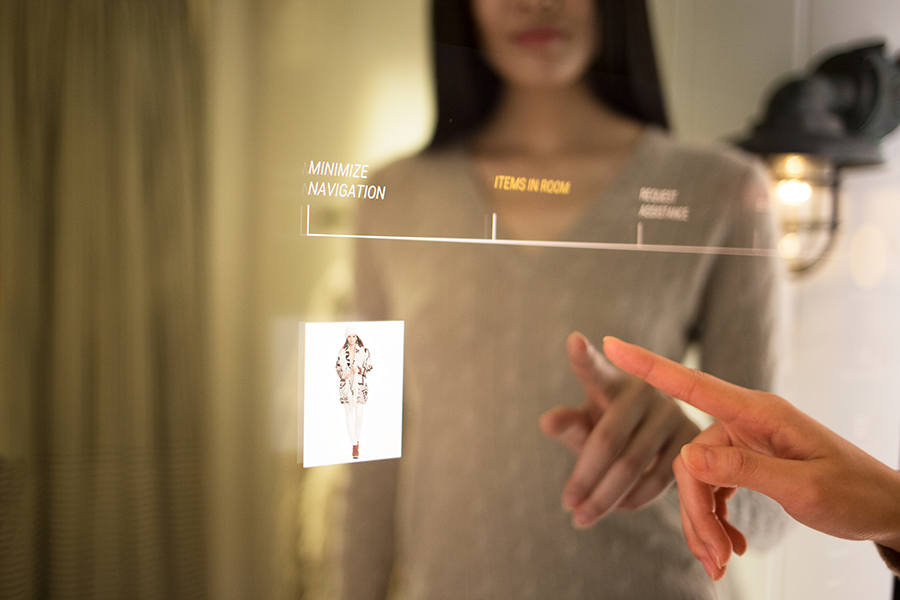Who benefits most from digital mirrors in fitting rooms: stores or shoppers?
Loading...
Brick-and-mortar retail stores are betting that if they bring the digital world inside they won’t get eclipsed by online shopping. Online stores make up about 7 percent of global retails sales for now and have enviable access to loads of customer data.
But retailers with physical stores are trying to catch up. A startup called Oak Labs announced Wednesday that its piloting a digital fitting-room mirror that will collect “unparalleled data that has never been collected throughout the history of retail,” on customers’ shopping habits, Oak Labs said.
Its digital mirrors are already installed in Ralph Lauren's Polo flagship store on Fifth Avenue in New York City.
Though retailers such as Nordstrom have tracked customers’ movements by following the Wi-Fi signals from their smartphones, and others by using video surveillance, attempts to follow customers into the fitting room are fairly new, and it is too early to tell whether shoppers will find it useful – or creepy.
Even though web retailers are tracking shoppers' activity online, even when they leave the retailer's website, being followed into the privacy of a fitting room could be unnerving to some.
“The idea that you’re being stalked in a store is, I think, a bit creepy, as opposed to, it’s only a cookie — they don’t really know who I am,” Robert Plant, a computer information systems professor at the University of Miami School of Business Administration, told The New York Times.
How do Oak Lab's mirrors work?
The digital mirrors -- which don't use any video cameras -- automatically turn on when customers enter Ralph Lauren’s fitting rooms, prompting them first to pick their preferred level of lighting, which includes options like “East Hampton Sunset.”
Radio-frequency identification technology behind the digital screens scans clothing tags in the fitting room and reflects each item on the mirror screen. Shoppers can view different styles and colors, pairing recommendations, and even can request different sizes from a sales associate who monitors the activity on an iPad.
These digital mirrors also make it possible for retail stores to collect the same type of consumer data that’s available to online retailers, like who’s shopping, what they’re looking at, how long they’re looking at items, and what they’re buying or not buying.
For now, Oak Labs is betting that the technology will pay off handsomely for brick-and-mortar retailers. The company’s founder, Healey Cypher, says in the media release that there’s “a tectonic change in retail,” projecting that the industry will see more change in the next five years than it has in the last 20.
Mr. Cypher, who first led the development of the interactive fitting room screens at eBay as its head of retail innovation, founded Oak Labs early this year. His eBay team developed the interactive mirrors in the fitting rooms at Rebecca Minkoff's flagship clothing store in New York City, reports Forbes.
The designer partnered with eBay about a year ago to be one of the first stores to install the digital mirrors in its fitting rooms last year.
“I felt like there was a lot missing from retail stores,” Ms. Minkoff told The Wall Street Journal. As a shopper, she wants more help in the fitting room. “Being half naked and having to hope that someone sees you when you pop your head out, that’s never been a fun experience,” she said.
Neiman Marcus has also experimented with interactive mirrors in its fitting rooms. Its version takes video and still photos of shoppers in their outfits that can be shared with family and friends on Facebook for feedback.
“This is a new shopper,” Uri Minkoff, chief executive and co-founder of the Rebecca Minkoff company, told the Wall Street Journal at the launch of the digitized store last year. “What would be the ideal way of shopping that would take away the pain points?” he asked.







